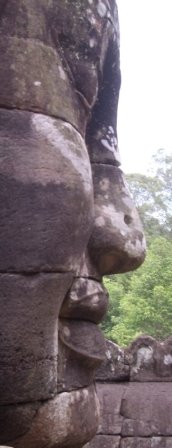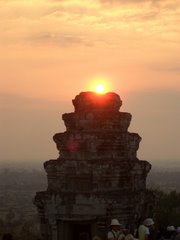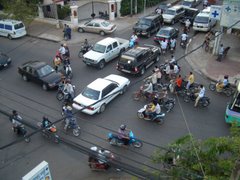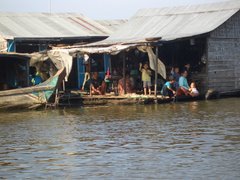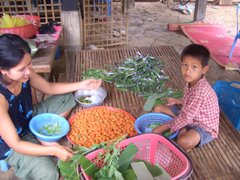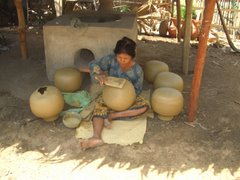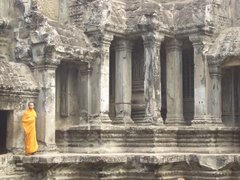It’s been a long while since I’ve posted to the blog – apologies to you who have been faithfully following my escapades. The last four weeks since my Aug 20th post have been filled to the brim with activities and efforts to complete my volunteer assignment by Sept. 14, which was my last day with VSO, officially. Perhaps another assignment in the future?...?...?
This has been a life-changing experience for me, and now that I have returned to the
One of the first things that struck me was the content of conversation, overhearing people on the airplanes in the USA talking about golf holidays, sports scores and all other matter, little of which I have been exposed to for quite awhile. And then the Sky Mall magazine on the airplane – full of gadgets and “necessities of life”, like motorized drink caddies for the pool, a personalized branding iron for steaks and a toy ATM for children at home that really works. It struck me how oriented toward leisure Americans are and that we have that opportunity so readily available to us. Just one Sky Mall gadget purchase would equal a major chunk of the average Cambodian family's income for a year ($280).
This is one of the struggles that I return with. I look at my own lifestyle, the home I live in, the things I own, the purchases I make - and it is diametrically opposite from how 95% of how the rest of the world lives. How I lived there is a sharp contrast to how I live here, and yet I have been truly happy, not really for want of anything.
So I leave with important questions. How will I live my life from this point onward? How will I engage with the rest of the world? What is my responsibility? How will I share what I have? With whom will I share it? And how much will I share without "neglecting" my own needs? Most all of us in the West are rich in comparison to the rest of the world and would have a very long way to the bottom when compared to much of the world. Even most of the impoverished in the USA or the UK are in sustainable and relatively comfortable situations. Not to say that it shouldn't change, but our poor are poor in relation to the American or British economic context.
So I leave Cambodia, absolutely in love with the country and its people, filled with the richness of an up-close and personal experience with a culture so different from mine, yet it is now part of me.
I leave with personal dilemmas to ponder and act upon, like answering the questions above and choosing what is right for me. I hope that I've given you some insights into this great country and perhaps raised some new questions for you to ponder about how you want to engage with this world of ours. Maybe it won't be a volunteer assignment in a faraway place, but I do know at least one of my readers who is now seriously contemplating a two year stint with VSO.
There are so many ways in which to play a part. It's about awareness and then choosing.
I also leave behind a project - conceived, designed, planned, funded and ready to be executed beginning in November of this year. This project in Enterprise Development based on market research is new for VSO and the first component will directly affect the incomes of over 500 poor families during the pilot year with an expansion that will affect a thousand or more families in the second. From that point forward, it has the potential to affect tens of thousands annually. Components 2 & 3 will will indirectly affect several thousand families in the first year alone, with steady growth thereafter. I'm feeling very satisfied with my work and very optimistic of what it will create for the poor.
And the flavors in the food I’ve been eating over the last few days have been, to my palette, largely bland. Sam, the gent who takes such good care of my house while I trot about the globe, was really thoughtful by going to Kroger and buying “food that you like”, he said to me. I looked in the fridge but I couldn’t find the food I like to eat. It’s not the food I’ve had over the last six months! It was like looking in a refrigerator museum of prepackaged, processed foods. They are available in
One of the best decisions I made while in
What I notice now as I sit here and write is how even-keeled I feel. My internal rhythm seems to run at a gentler pace and I feel exceedingly happy inside. Although there is a mountain of stuff to get done in the next week before I leave again, catching up on what has passed and getting prepared for what’s to come, I feel confident and quiet inside trusting that it will all come together. I’ve been touched deeply by the way of the culture, the way of the Cambodian people - a faith that things will work out.
Although my time in
One definite thing is that Lizzy and I will be married in London on March 28 at Kew Gardens! So there is lots to be done in anticipation of the big event.
In my next posting I intend to do my best to tempt you to come to
Thanks for coming along with me on this journey.






